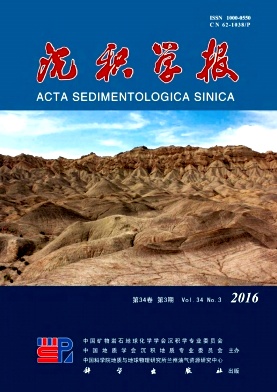Research Progresses on Hyperpycnal Flow Deposits
doi: 10.14027/j.cnki.cjxb.2016.03.003
- Received Date: 2015-08-17
- Rev Recd Date: 2015-11-09
- Publish Date: 2016-06-10
-
Key words:
- hyperpycnal flow /
- hyperpycnites /
- gravity flows /
- control factors /
- sedimentary characteristics /
- depositional model
Abstract: Based on literature investigations, research status on hyperpycnal flow was summarized mainly including flowing process, fluid properties, controlling factors, sedimentary characteristics. Sedimentary method among hyperpycnal flow and other gravity flows was discussed and depositional model on “channel-ligule-lobe” was constructed, accompanying with the research example from Mesozoic lacustrine hyperpycnites. Hyperpycnal flow is a kind of sustained turbidity currents generating from flood-river estuary, flowing along the bottom of water for its higher density than catchment basins water. It has frequent occurrences and stable sediments supplies, which triggered by river floods. The phenomenon on the plunging of fluid is the symbolism of formation on hyperpycnal flow. It can make a long-distance transportation along the bottom of the water body, as long as the adequate slope existes at the bottom of basins. Hyperpycnal flow belongs to Newtonian rheology, presenting turbulent state, being supported by fluid turbulence. It has no need of the early accumulation and transportation again on sediments, and event-triggered mechanisms like earthquake, volcano eruption, storm and tsunami. Hyperpycnal flow is controlled by factors of topography, climate and density differences. It takes place in both marine facies and terrestrial lacustrine basin. The current researchers, however, have not paid enough attention to the hyperpycnal flow deposits in terrestrial lacustrine basin,although advantages of lower water density, closer to source areas, enough terrain altitude difference, well developed small and medium sized river and active tectonic movements, always exist in lakes. Hyperpycnal flow appears a diluting tendency from vicinity to distance and corresponds to specific sedimentary structures and sequences. With the hydrodynamic conditions decreased gradually, sediments of hyperpycnal flow present a tendency that grain size much smaller, sand thickness much thinner to the center of basin. Most of them are medium sized sandstone, fine sandstone and siltstone. The distribution is much steady horizontally. And it appears to the shape of fan which consists of “channel-ligule-lobe” accompanying with natural barrier on plane. Channel is linked directly to underwater distributary channel, the place where erosion and filling mainly happened. Channel-ligule in the middle of sedimentary sandbody develops mostly. And lobe at the distal ends can extend a long distance. Hyperpycnites or hyperpycnal flow sediments can be distinguished from turbidites by: well developed micro-erosion surfaces, the combinations of upward-coarsening intervals and upward-fining intervals formed in waxing and waning flows, and rich in terrestrial organic matters. The triggered gravity flows deposits can be the result of the transportation again about the sediments of hyperpycnal flow. The mix of them is good for keeping high density and stability. Thus, hyperpycnal flow can accompany with other gravity flows to form thick sandstones with much more complicated factors. Research on hyperpycnal flow deposits has important scientific values and practical significances to make further researches. It will not only be propitious to fulfill sedimentary theory of deep-water gravity flows and to analyze sedimentary environment, but also in favor of guiding exploration on deep-water unconventional petroleum.
| Citation: | SUN FuNing, YANG RenChao, LI DongYue. Research Progresses on Hyperpycnal Flow Deposits[J]. Acta Sedimentologica Sinica, 2016, 34(3): 452-462. doi: 10.14027/j.cnki.cjxb.2016.03.003 |






 DownLoad:
DownLoad: